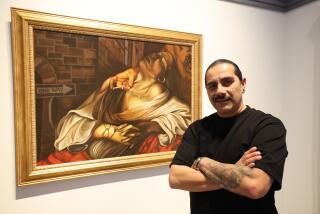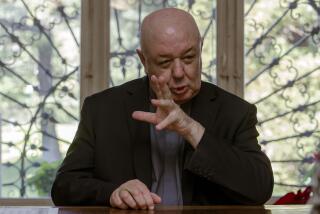A more intimate look at Vatican art
Vatican City
Walk through the Vatican at night and you can hear your footsteps on the marble floors, echoing down the centuries, along corridors where great artists once trod, through the opulent apartments where popes plotted stratagems for power. On through the loggias, vaults and galleries where a succession of pontiffs surrounded themselves with regal splendor.
While often engaged in most unholy and ruthless power-mongering, they nevertheless used their great wealth to bring art and literature to this temple that for centuries was an extravagant private palace.
And on new, exclusive night tours of the Vatican, there is a kind of luminous silence, something sacred in these polished, empty rooms that are still full of beauty. You can almost hear the long-ago whispered scheming in the inlaid corridors, the flurry of a cloak fleeing around a corner.
Undisturbed, those images of Western civilization seem to glow and breathe of their own accord.
During the day, of course, it is a different matter: You can lose sight of the treasures of the Vatican because after you have queued outside for up to two hours in sweltering heat or freezing cold, you must shuffle through with thousands of other sweating, shivering and aggravated visitors. It can be a little difficult to concentrate on the tremendous Raphael frescoes when someone has just fainted (not to be recommended on marble floors). The baser side of your nature can emerge fairly sharpish when you are jostled out of seeing something such as Raphael’s “School of Athens” or the Botticellis that were high on your list of the 10 things to do before you die.
“The ambulances are going in and out all day,” says guide Brenda Bohen. “I have seen it all. Usually you literally cannot move at all, there are so many people jammed in like sardines. I once took a group of 73 senior citizens through, and not one of them made it to the end: They all took ill, mostly panic attacks. People are losing their lives to see it.”
“It,” of course, is the ceiling of the Sistine Chapel, the prize at the end of all the shuffling and swearing through the other galleries full of the frescoes telling the prescribed stories that were the Vatican’s equivalent of a media system, its own glorious version of spin.
Michelangelo, the unwashed, socially inadequate sculptor from Florence, never took off his boots, even to sleep, and was forced into a commission he did not want by Julius II, one of the more ruthlessly military popes. The artist, who was new to painting frescoes, violently guarded his creation and fought constantly with his patron. He emerged after four years, having created arguably the greatest masterpiece of all time by a single artist.
When the cardinals meet to elect the next pope, it is here in the presence of great art that they do it. And it is from this roof that the white smoke is sent to signify agreement on a new pope.
Although officially closed at night, the Vatican is allowing exclusive tours for small groups. They’re run by Helen Donegan, an Irishwoman who has lived in Italy for 30 years. She has forged strong links with the Vatican and persuaded the authorities to allow her to take in people, after hours, who don’t like crowds. These tours are for those who want to see the chapel as it was meant to be seen: as a place for contemplation and prayer, the whole spiritual experience, preferably lying down so you can fully savor the view of the tremendous goings-on up on the ceiling.
The tour lasts three hours, taking in the Vatican Museums and the Sistine Chapel. The maximum group size is 20, with one guide for every 10 visitors. Donnegan can also assist with reasonably priced hotel accommodations in Rome.
Going to the chapel with very few people is really something: You can see. And you do have to wonder what was going on in Michelangelo’s brain with all that manic writhing in the story of creation and, on the end wall, the damning Last Judgment.
The really tremendous achievement is the medium of fresco. A small section of the surface was plastered and quickly painted over while still wet, so the color penetrated permanently. Once it was dry it was solid and could not be revised or corrected.
In other words, Michelangelo had to do each bit quickly, and he had only one go at it. No wonder he never took his boots off.
The Sistine Chapel, painted between 1508 and 1512, had become covered in nearly 500 years of Roman grime.
In 1980, the Vatican began a controversial cleaning and restoration project that cost millions of dollars and took 12 painstaking years.
When it was finished, the extraordinary vibrancy of Michelangelo’s original colors was revealed, along with the extravagant passion of his work. There were many who felt the cleaning ruined the frescoes; the debate continues.
More to Read
Sign up for The Wild
We’ll help you find the best places to hike, bike and run, as well as the perfect silent spots for meditation and yoga.
You may occasionally receive promotional content from the Los Angeles Times.






